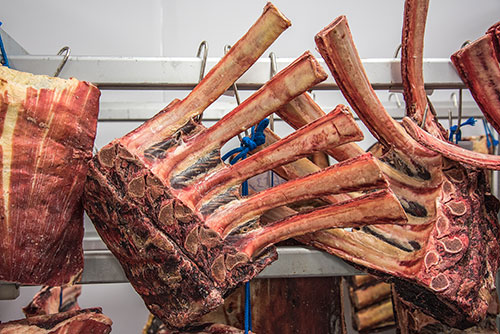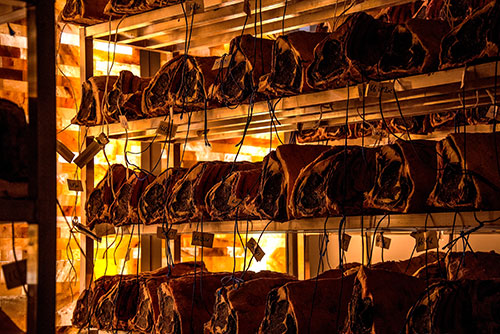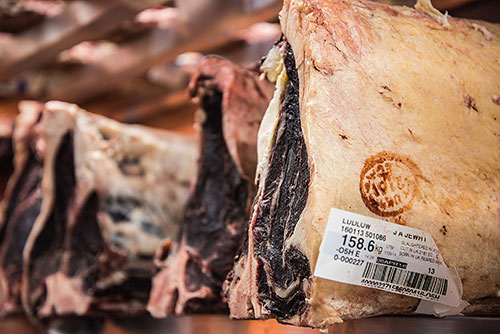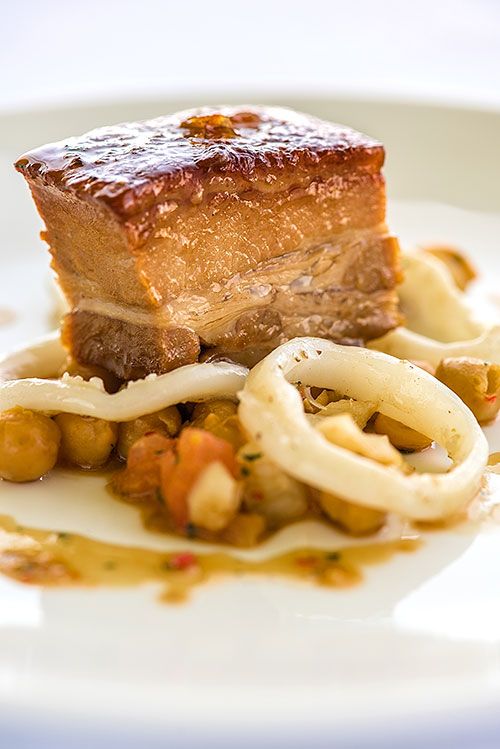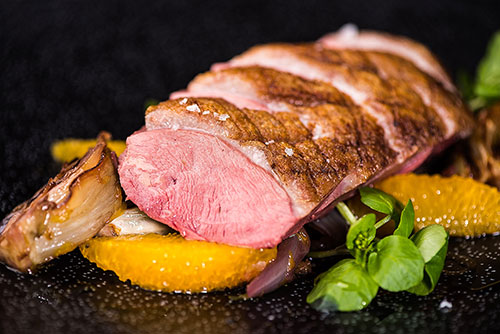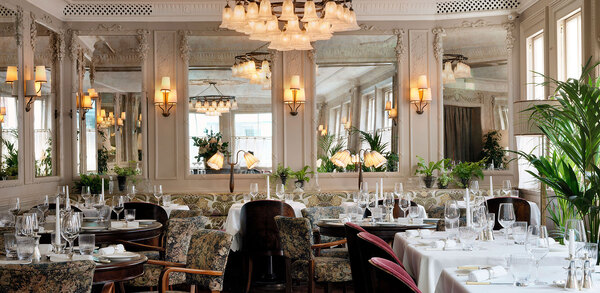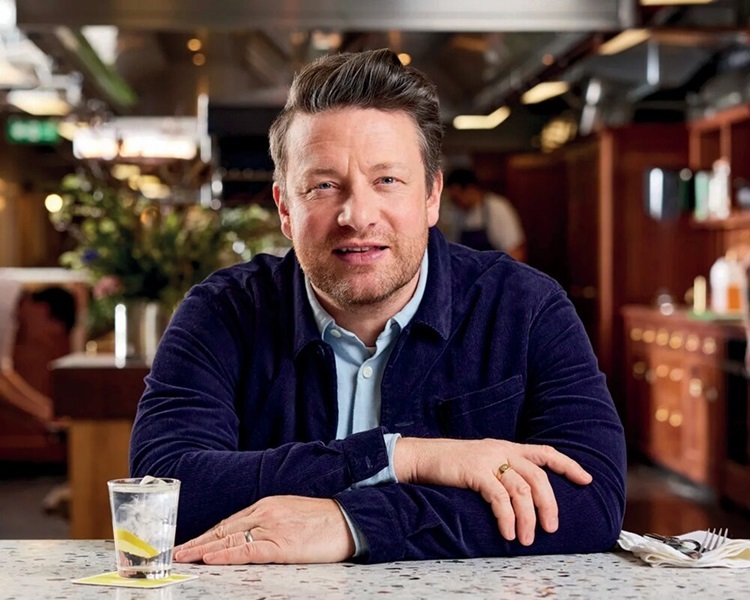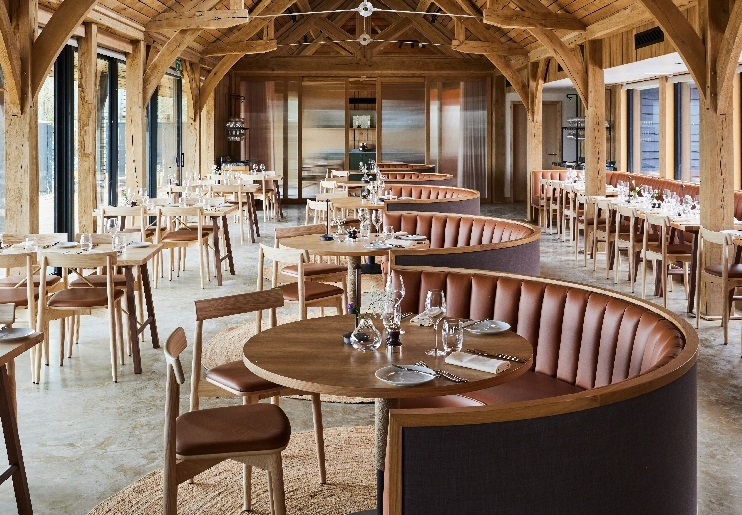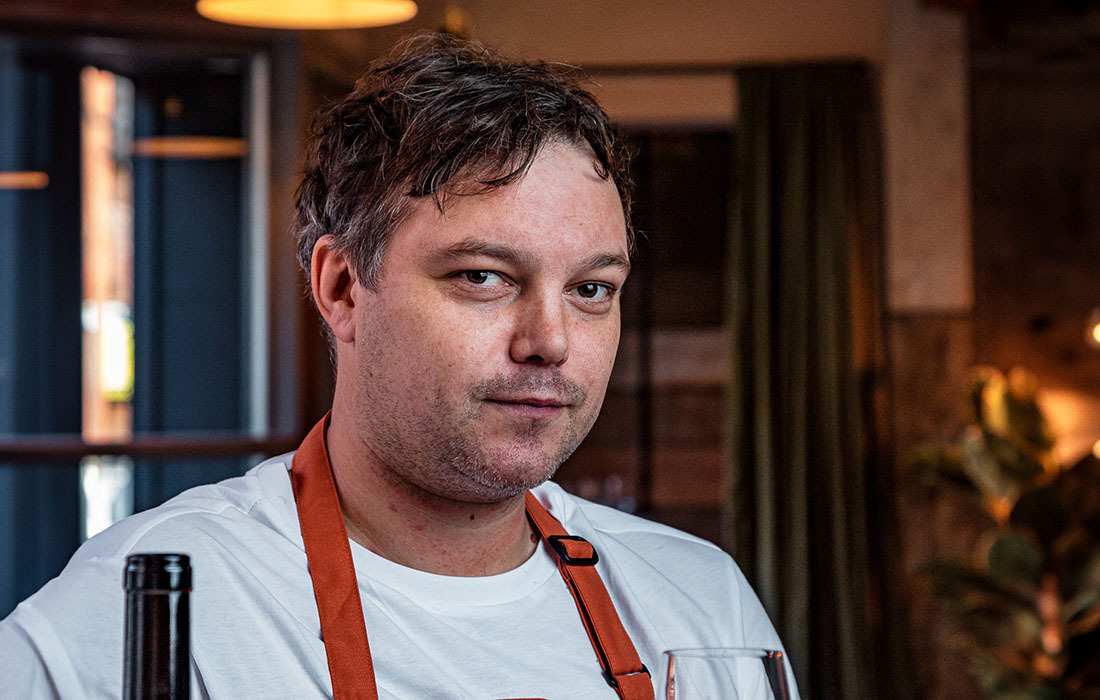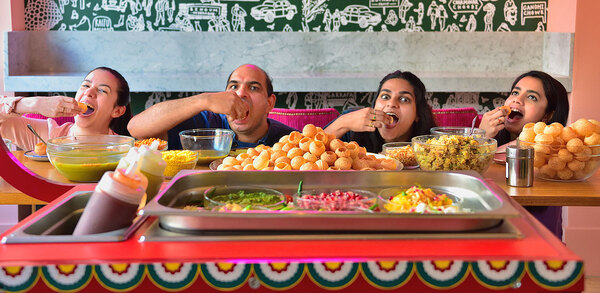Salt chamber ageing: how meat is being metamorphosised
Ageing meat in a salt chamber for up to 100 days gives it a depth of flavour that can redefine recipes and have customers queueing for a taste of a new delicacy. Russell Brown visits Udale Speciality Foods' new venue in Lancashire
The big challenge for any butcher is supplying a consistent product, given that the raw material has huge variations. Every chef will recognise the scenario of an inexplicably tough steak being returned to the kitchen, so anything that can be done to increase the consistency of high-quality meat has to be welcomed. This is certainly the driver behind the installation of salt ageing chambers at speciality food supplier Udale in Morecambe, Lancashire.
Udale is a family business, founded in 1906, and it already has a significant reputation for supplying quality meat for many years. Its lamb has always been the jewel in the crown in a region renowned for salt marsh lamb and lamb grazed on the fells.
Chef Marcus Wareing regularly uses spring lamb from Udale on his menus, but supplying beef to a wider market is a key part of the companyâs business plan. The beef is sourced predominantly from farms in Cumbria with some coming from Lancashire and Yorkshire. Breeds include Belted Galloway, Longhorn, Shorthorn, Hereford and Dexter. Some of the beef is being aged to chefsâ specific requirements â" 100 days is popular â" but co-owner Ian Udale, who is closely involved in the butchery, would plump for something in the 35- or 40-day area. I tried a ribeye at 21 days and a sirloin at 35 days; my preference would normally be for the ribeye, but in this instance the extra age on the sirloin definitely gave it the edge.
With a fleet of 16 vehicles, a staff numbering over 50 and a large cutting facility with plenty of space for ageing, Udale is well-placed to grow its market. Its vans cover a large area in the North West, from Carlisle to Liverpool, and an effective overnight courier service means it can supply chefs across the country. Orders are placed prior to 12 noon for delivery the following morning. The tracking system allows Udale to see when a delivery has been signed for, and in London it is often by 8.30am. Sales director Jason Myers says that, after the quality of the products, confidence in the delivery service is a vital part of the reason for an increasing number of chefs purchasing from them.
The main focus with salt-chamber ageing has been on beef cuts, and the largest salt chamber at Udale is given over predominantly to bone-in ribs, bone-in sirloins and tomahawk steaks. The number of salt chambers is set to grow to four, allowing different products to be aged in specific conditions.
The walls of glowing Himalayan salt bricks are the obvious focus of attention in the chambers, but this is only part of the story. Behind the ceiling panels, a raft of technology controls the temperature, air flow, lighting and humidity. Automatic adjustments are made when the monitored levels change: for example, when new stock is rotated in the chamber.
The company that installed the system works extensively in Italy with ham producers. The main theories behind the use of these unique salt bricks are a reduction in moisture levels, purification of the air and ionisation, which are all about the control of bacteria. I have seen ribs of beef that have been in a salt chamber for close to a year with absolutely no sign of mould and no âoffâ smells.
The magic number
As with most foods, it comes down to the preference of the chef and the customer as to what ultimately works for a given business. Galton Blackiston, chef-proprietor at Morston Hall near Holt in Norfolk, is a big fan of the 100-day-aged sirloins. He speaks of the âincredible depth of flavour with slightly musky notesâ. He currently serves the sirloins by boning them, trimming heavily and splitting the eye in half lengthwise before sealing on the plancha and then roasting. The cooking time is much shorter due to the dry texture of the meat in its raw state. A portion weighing approximately 50g is cut and used on the tasting menu. He comments on the âfantastic marblingâ and says he removes the majority of the fat as the flavour can be overpowering. The accompaniments are kept simple: a Bordelaise sauce with plenty of flat leaf parsley.
The cost of the final product is inevitably higher than a standard piece of meat. Weight loss at the 30-day mark is between 15% and 20%, and this increases with longer ageing. More trimming is required, butchery takes longer and, for the supplier, costs such as energy are greater. This is before you take into account the initial cost of installing the salt walls and associated plant. Currently, Udale is charging £4.98 per kg for the salt chamber-aged duck and £5.99 for 10oz ribeye and sirloin steaks. Serving the steaks with simple garnishes costing £2, this equates to a menu price of just under £30, assuming a 68% gross profit and VAT at 20%.
The range of chefs who are using products from the salt chamber is diverse, but one local business that takes a number of different products is the Midland hotel in Morecambe, part of the English Lakes hotel group. Here, head chef Michael Wilson is using ducks, lamb rumps and pork belly from the salt chamber and has plans to add steaks to the list.
Co-owners Neil and Ian Udale
From the dishes that Wilson cooked for us to taste at the Midland and from some samples I cooked myself, I would say that the effect of the salt chamber ageing can be significant. For me, it was most obvious in some duck and hogget. The Goosnargh duck I cooked had been in the chamber for eight days and was significantly drier than usual. The cooking time was slightly shorter than you would expect and the meat was incredibly tender. The situation with the hogget was similar. One aspect I really noticed was that the membrane between the fat and muscle on both the duck and hogget had broken down much more than usual, making for a better eating experience.
The number of salt chambers around the country is certainly increasing and my guess is that there is still plenty of room for more, especially as suppliers experiment with different cuts and ageing times. The products give chefs another point of difference on the menu and deliver an experience for the customer.
Michael Wilsonâs spiced Himalayan salt chamber-aged pork belly, salt cod, squid, chickpea relish and coriander
Makes 20 starter portions
For the pork belly
- 3kg Himalayan salt chamber-aged pork belly
- 4 onions, sliced
- 1 head celery, roughly chopped
- 2 red chillies, sliced
- 3 lime leaves
- 3cm piece galangal, roughly chopped
- 3cm piece ginger, roughly chopped
- 2 garlic heads, halved
- 1 litre white wine
- 2 litres good quality chicken stock
In a large roasting tin, seal the belly, colouring well. Remove the belly, add all the vegetables and spices and cook until well coloured.
Deglaze with the white wine, reduce by three quarters and then add the stock. Add the pork belly, making sure it is covered â" add more stock if necessary. Cover and cook at 90°C overnight or at 130°C for three to four hours.
Once cooked, remove the bones, press the belly between two trays and chill. Once completely chilled, trim and portion. Strain the cooking liquid and reduce by three quarters â" this is for reheating the belly and the relish.
For the salt cod
- 1kg cod loin
- Juice and zest of 1 lemon
- Juice and zest of 1 orange
- 1 clove of garlic, crushed
- 100g Maldon salt
- 6 sprigs of thyme
- 1 bay leaf, crumbled
- Milk to cover
To make the cure, mix together all the ingredients except the cod and the milk. Salt the cod with the cure for 24 hours, then wash the cure off. Place the cod in a pan of milk and bring to the simmer. Remove the cod, flake it into large pieces and chill.
For the chickpea relish
- 2 red onions, finely diced
- 1 clove of garlic, crushed
- 1 red chilli, finely diced
- 1dsp coriander seeds, dry-fried
- 400g cooked chickpeas
Sweat the onion, garlic and chilli in olive oil, crush the coriander seeds and add to the mix. Add the chickpeas and mix through well. Season and chill.
For the squid
- 1kg cleaned squid, cut into rings
- Salt and pepper
- Butter/oil for frying
- Lemon juice
To serve
- Tomato concasse
- Baby spinach
- Freshly chopped coriander
- Micro coriander to garnish
Seal the pork belly in a hot pan then add some pork stock and heat in a hot oven for five minutes. Warm the relish up, then fold in the salt cod and add the tomato concasse, baby spinach, coriander and a little pork stock.
While the pork is warming, sauté the squid in hot oil and butter. Add lemon juice to taste.
Add the squid to the chickpeas and divide between the plates. Top with the spiced pork belly and garnish with micro coriander.
Russell Brownâs roast salt chamber-aged Goosnargh duck with fennel and orange
Serves 2
- 1 duck crown
- 1 bulb of fennel, cut into eight wedges
- 1 red onion, cut into eight wedges
- 2 cloves garlic, finely sliced
- 2 oranges
- 100ml white wine
- 50ml good olive oil
- 1 bunch watercress
Score the skin on the duck, season well with salt, and seal the crown in a hot pan.
Heat a non-stick pan, add some olive oil, then season the fennel and caramelise on the cut surfaces before transferring to a roasting tin. In the same pan, sauté the onion until it just starts to colour, add the garlic and then mix in with the fennel. Grate the zest of one orange over the fennel mix, then peel the oranges and segment. Scatter half the segments over the fennel mix and place the duck crown on top. Add the wine to the roasting tin and roast the duck at 180°C for 12-15 minutes. Remove the crown and place upside down on a wire rack to rest. Return the roasting tin to the oven and cook the vegetables until dry and tender. Dress with some olive oil and season.
To serve, divide the vegetables between plates or bowls and dress with the fresh orange segments and watercress. Remove the duck breasts from the bone and carve into slices. Lay the duck over the vegetables and drizzle over some good quality olive oil.
Â



